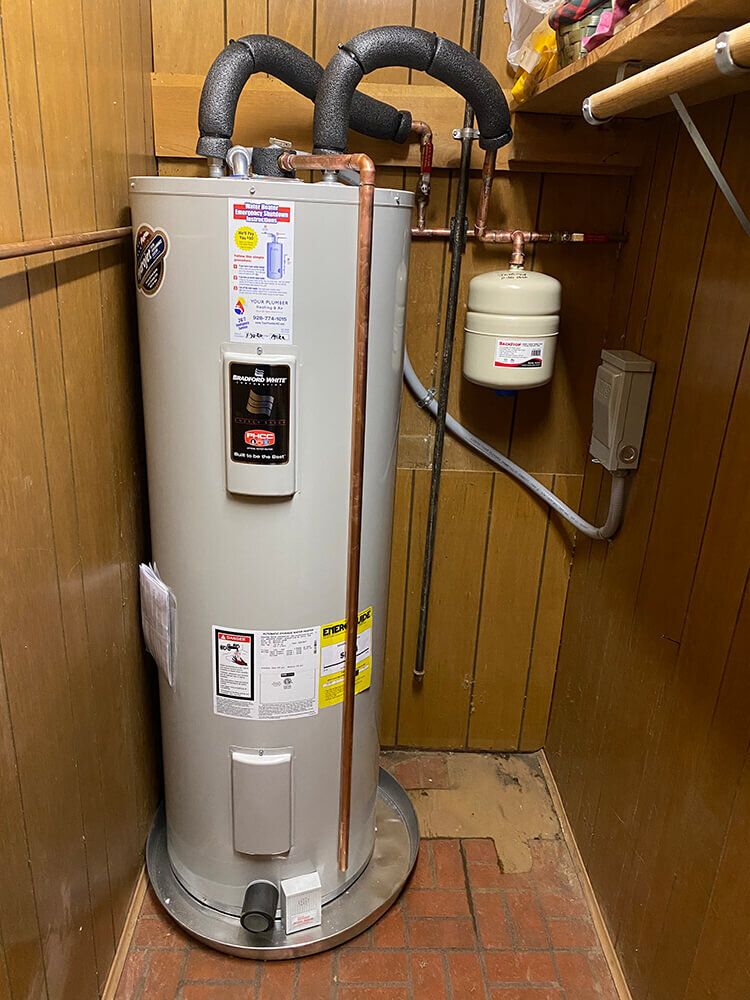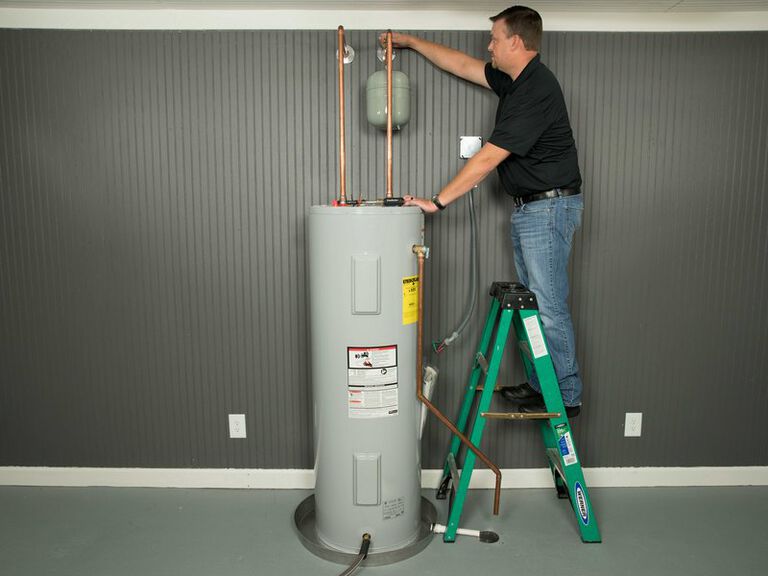Full Overview to Water Heating SystemInstallation and Replacement
Recognizing the intricacies of water heating unit installment and substitute is essential for house owners looking for to ensure effectiveness and integrity in their warm water supply. From selecting the proper kind and dimension to executing a seamless setup process, a number of variables must be thought about to prevent usual challenges. This overview will provide you with the required steps and insights to navigate the complexities of this home enhancement task, while likewise highlighting essential upkeep techniques that can lengthen the life of your system. As you discover these facets, you might locate on your own reassessing your existing arrangement and recognizing locations for enhancement.
Kinds of Hot Water Heater
When thinking about water heater setup and replacement, it is important to comprehend the numerous kinds of water heating systems readily available in the market. One of the most typical types include storage tank hot water heater, tankless water heaters, heatpump hot water heater, and solar water heaters.
Storage tank water heating systems are traditional systems that keep a specific volume of hot water, making them readily available when required. In comparison, tankless water heaters give warm water on need, eliminating the requirement for storage space.
Heatpump water heating systems use power to transfer warm from the air or ground to warm water, supplying considerable power savings however calling for even more space and details installation conditions. Solar water heaters harness solar power to warm water, supplying a green alternative with possible long-term cost savings, although they frequently require a backup system for over cast days.
Understanding these alternatives ensures informed decisions pertaining to installment and replacement, accommodating particular requirements and preferences.
Picking the Right Dimension
Selecting the appropriate size for a hot water heater is crucial to make certain ideal performance and efficiency. An unit that is also little will battle to satisfy house needs, resulting in irregular warm water availability and raised power usage. Conversely, an extra-large hot water heater can cause unnecessary energy waste and higher utility costs.
To figure out the best dimension, consider the house's top warm water usage. This can be computed based upon the number of owners and their normal warm water requirements. For instance, a household of 4 may need a water heating system with a capability of 50 to 80 gallons, depending on the use patterns, such as simultaneous showers and laundry.
Furthermore, assess the healing price, which measures exactly how promptly a heating system can restore warm water after it has actually been made use of. For tankless models, concentrate on the circulation price, determined in gallons per minute (GPM), to ensure it fulfills the house's simultaneous demand.

Setup Refine Summary

Next, the old device needs to be disconnected and gotten rid of, making sure to comply with local codes and laws pertaining to disposal. When the old unit is out, the brand-new hot water heater can be positioned in area. This step entails linking the water supply lines, making certain that all fittings are safe and secure and leak-free.
After developing water connections, it's essential to link the power supply, whether electrical or gas, complying with the supplier's directions diligently. Once all links are made, the system should be filled up with water, and the power can be transformed browse this site back on. It's vital to check for leaks and make sure the water heater is functioning properly prior to finishing the installation process.
Typical Installment Mistakes

Another frequent blunder is neglecting to follow local codes and policies. Failing to adhere to these criteria can not only lead to safety threats but might additionally result in expensive penalties or the requirement for pricey reinstallation.
Stopping working to secure connections or using the incorrect kind of fittings can lead to leaks and water damages. By staying clear of these typical setup blunders, homeowners can guarantee their water heater runs securely and efficiently, taking full advantage of efficiency and longevity.
Maintenance Tips for Long Life
Proper upkeep of a hot water heater is necessary for its long life and ideal performance. Normal inspections and servicing can protect against costly repair work and extend the appliance's lifespan. Begin by checking the temperature setting; it must normally be set in between 120 ° F and 140 ° F for ideal power effectiveness and safety and security.
Every six months, purge the tank to get rid of sediment accumulation, which can impair heating efficiency and cause corrosion. To do this, transform off the heater, link a hose to the drainpipe shutoff, and allow the water run until it is clear.
Anode rods should be checked annually and replaced when they are worn away. These poles help stop container corrosion by drawing in harsh components in the water.
Additionally, inspect the stress safety valve on a regular basis to guarantee it is functioning properly. This shutoff is essential for preventing extreme pressure accumulation within the container.
Last but not least, consider scheduling an expert maintenance check every couple of years for detailed inspections and servicing. By adhering to these maintenance tips, property owners can considerably improve the effectiveness, security, and life expectancy of their water heating systems, making certain trusted warm water for several years ahead.
Verdict
In final thought, proper installment and maintenance like this of water heating systems are important for guaranteeing performance and longevity. By understanding these essential elements, homeowners can accomplish a dependable hot water supply while reducing possible problems associated to water heating system procedure.
Comprehending the ins and outs of water heating unit installation and replacement is essential for house owners looking for to ensure efficiency and dependability in their warm water supply.Container water heaters are traditional systems that save a specific quantity of hot water, making them easily offered when needed. In contrast, tankless water heaters provide warm water on look at here now need, eliminating the need for storage space. Selecting a water heating unit that is either as well tiny or also big can lead to inefficiencies, resulting in insufficient hot water supply or excessive energy consumption.
By understanding these necessary facets, house owners can accomplish a reliable hot water supply while minimizing prospective issues related to water heating unit procedure. pipe repair.